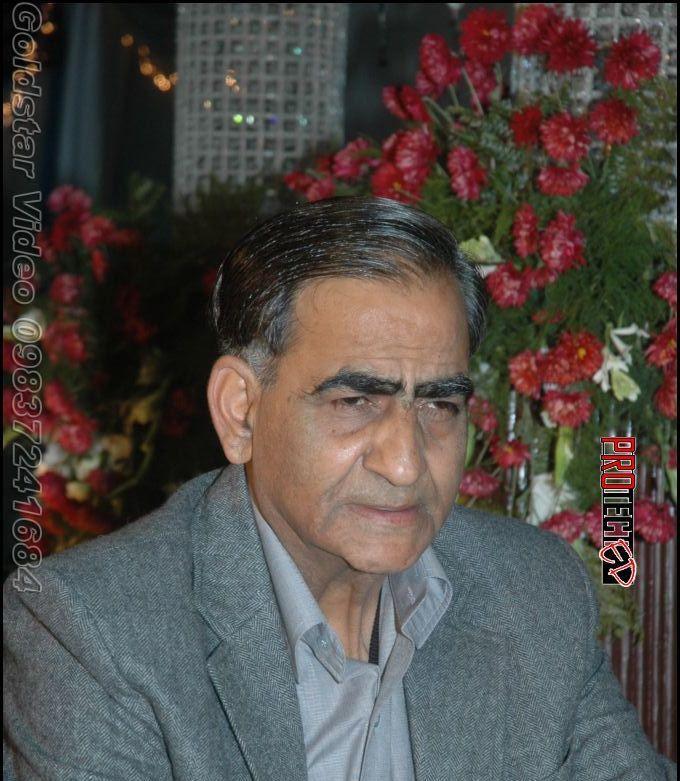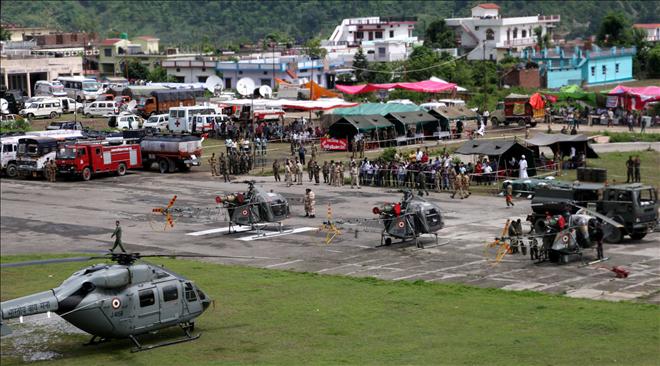 Almost a month has passed since the major cloudbursts devastated different parts of Uttarakhand, including Kedarnath, Badrinth, Gangotri Yamunotri, Uttarkashi, Joshimath, Govindghat and Narainbagad.
Almost a month has passed since the major cloudbursts devastated different parts of Uttarakhand, including Kedarnath, Badrinth, Gangotri Yamunotri, Uttarkashi, Joshimath, Govindghat and Narainbagad.
The heart-rending stories from Ground Zero look distraught, leaving behind agitated and panic-stricken victims struggling even today.
Most of those stranded are pilgrims from different parts of the country, who had undertaken their Himalayan journey to the Hindu Holy Shrines of Badrinath, Kedranath, Gangotri and Yamnotri in June.
Some locals believe that the Himalayan Tsunami is Lord Shiva opening his Third Eye, denoting His extreme annoyance, which caused the flash floods, turning the Devbhumi into a ghost town with bodies strewn all over the place.
Rescue work hit
Continuous rains hampered rescue operations in the flood-hit state, and Government and private helicopters find it difficult to undertake sorties in unfavorable weather.
Vehicular traffic may not be resumed for a long time, as roads have given away in many places. So far, over 80,000 people have been evacuated to safer areas but more than 10,000 people are still stranded in Harsil and Kedarnath.
Chief Minister Vijay Bahuguna said on July 8 that the number of people missing had risen to more than 4700, of which 750 are from Uttarakhand.

Himalayan Tsunami
Jawans of the Indian Army, Indo-Tibetan Border Force, Border Security Force, Indian Navy and other forces are working hard to rescue hungry and panic-stricken people.
At the time of writing this report, more than 10,000 people are believed to have lost their lives in what is now called, the ‘Himalayan Tsunami,’ which hit the region on June 16.
This figure keeps rising.
Eye witnesses say that the Kedar valley was littered with corpses buried under debris, sometimes devoured by big cats, leopards.
Following an aerial survey, Prime Minister Dr Manmohan Singh announced a federal government grant of Rs 1000 Crores (about $212 million) for relief works. Several state governments have also pledged their support.
Natives ignored
But natives of the region, who have been the worst affected, have not had the attention of officialdom and the national media. No one has reached them and they remain isolated. Roads leading to their villages have reportedly been washed away. The situation is also bad in Pithoragarh in the Kumoun Division, where several landslides have caused damage to public and private property.
Why have the villagers been ignored? This question is making its rounds in most of the knowledgeable circles. Sukhvinder Singh, a Ludhiana native, who was stuck for eight days on the way to Hemkund Sahib, said, “I was en route to Hemkund Sahib when the disaster struck. The situation was deteriorating fast but we were a bit relieved, when the Army stepped in. They gave us food and water and helped us in every possible way. We would not have survived without them.”
Army help
Recalling his horrific experiences, Aman Bisht, who arranges treks to Hemkund Sahib every year, said, “The road links were shattered and bridges were destroyed. Even if there was a road somewhere, it was broken. The Army has been very supportive.”
Another survivor from Punjab, who was rescued from Joshi Math, said that he was able to contact his family only with the help of army personnel.
Even though it is widely reported that several villages in the affected areas were washed away, no one knows about the fate of hundreds of their inhabitants.
This mighty natural disaster has not only exposed the level of preparedness of the central and state governments to face such an extraordinary situation, but also raised several basic questions.
Some of these questions relate to the regions environmental degradation, indiscriminate felling of trees, blasting of hills for construction of roads, fragile mountains and increased neo-tectonic activities.
The region has been listed in ‘Zone 5’ ‘(high risk area) of seismic map of the country.
Annual forest fires and unabated inflow of tourists are stated to be some other reasons for the current devastation.
Rajendra Prasad Nailwal is a retired Special Principal Correspondent of the Times of India. He now lives in Dehra Dun. The above article is exclusive to Indian Newslink.
Donations can be made to Bank of Baroda in New Zealand- Account Number 0212730020888002 in the name of Uttarakhand Association of New Zealand. Cheques can also be sent favouring Uttarakhand Association of New Zealand Inc to 138, Lewis Road, RD1, Karaka, Auckland 2580.




